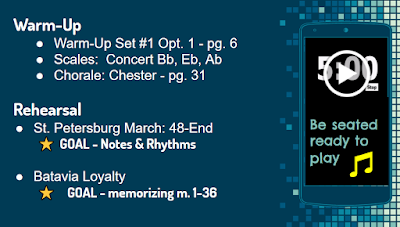School music concerts not only showcase our students’ hard work and musical skills, but they're an opportunity to educate and connect our audience to the overall music program. Additionally, concert programs show what is important and valued in the music program. Whether your programs are professionally printed or they're copied at your school, including the following elements can take your programs to the next level.
- Music advocacy articles. Include 1-2 articles that promote the value of a musical education.
- Program notes with QR codes. QR codes have the ability to make your concert programs more informative and interactive. They provide a online link giving the audience member more information about the composer, a YouTube video, or even show examples of student work. Try this QR code generator for Chrome.

- Private teacher list. We all know that private lessons give students an edge and concerts are just another opportunity to mention the benefits of studying privately.
- Summer music camp recommendations (include a QR code or website address). See my example.
- Create a Padlet for audience members to send well-wishes to their performer during the concert. Or, have the audience members list their favorite piece performed at the concert. Be sure to share the link or generate a QR code for access.
- Field trip form or permission slip. We all know that it can be tricky getting our students to bring important things home. Including a permission slip in the concert program helps to insure the parents receive it. Plus, any important information about the trip can be mentioned at the concert.
- Include puzzles or activities for parents and siblings to keep busy while waiting for the concert to start. For example: What’s your elf name? (December concert), What's your leprechaun name? (March concert), music word searches and crossword puzzles, etc.
Whichever elements you decide to use, your time and energy will be well-spent in creating a program you are proud of and also appreciated by your audience. Make sure to proofread the final draft for all spelling and grammatical errors, especially student names. If you've created programs with additional elements not listed above, please leave a comment below. I'd love to read about your creativity.
Teaching Band & More is soon becoming Teaching Music & More? Visit our Facebook page and like us!
Teaching Band & More is soon becoming Teaching Music & More? Visit our Facebook page and like us!





